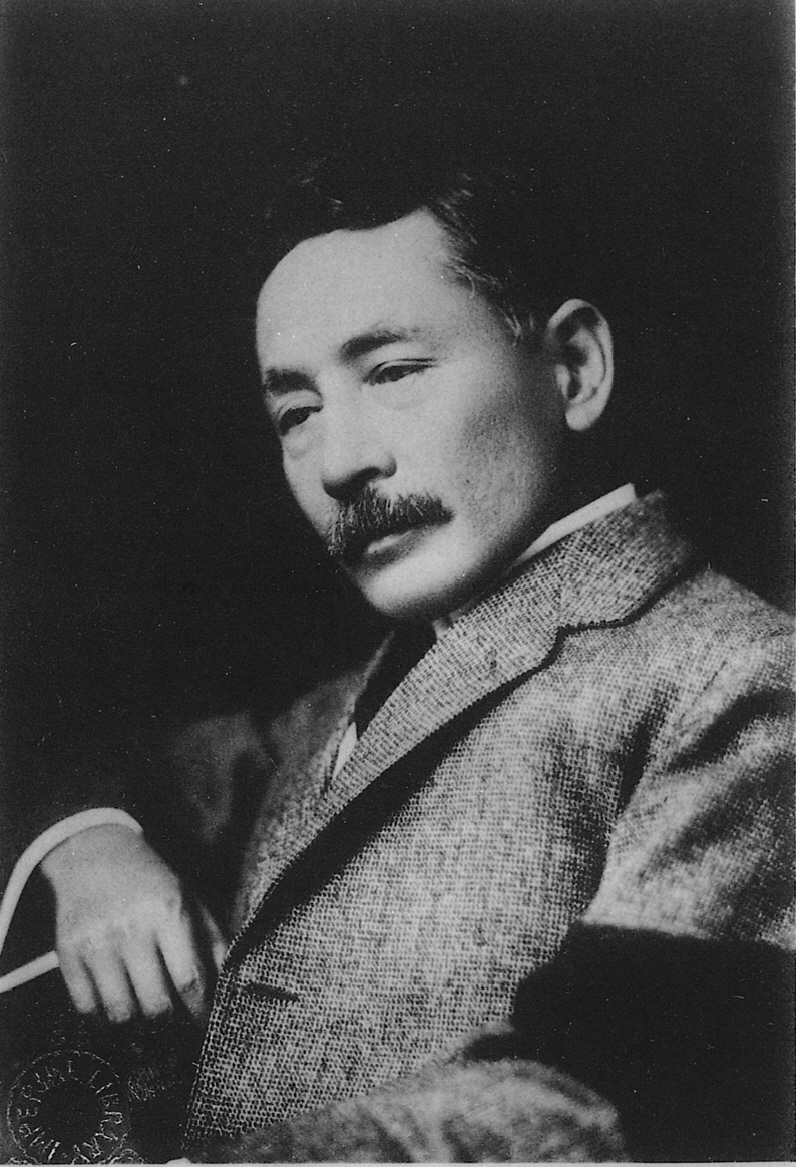 |
| Natsume Soseki |
Soseki was the sixth child and unwanted child by his family, because he was born to his mother late in her life. His mother was 40 years old and father was 53 years old. In 1868, he was sent to childless couple named Shiobara Masanosuke and his wife. However they divorced, therefore Soseki returned to his real family when he was 9 years old. His family welcomed him, except for his father. He didn’t have good relationship with his father. His mother died when he was 14 years old.
He attended the First Tokyo Middle school (now Hibiya High School) and while studying there, he became enamored with Chinese literature and he dreamed of becoming a writer. When he told his old brother about his dream, his family strongly disagreed. In 1884, he entered Tokyo Imperial University to become an architect. While at university, he study Chinese classics and also started to learn English.
In 1887, he met Masaoka Shiki and Soseki was affected by him. Soseki started singing his poems. He entered English Literature department in 1890. In 1895, he began teaching at Matsuyama Middle School and he also published haiku and Chinese poetry in that time.
In 1900, he was sent to study in Great Britain as “Japan’s first Japanese English literary scholar” by the Japanese government. However he didn’t get his scholarship by government. He studied instead at University College London. Before he arrived in London, it took 2 months to get there. He visited many museums in London. He studied a lot of English and he came to have a fundamental question, “What is Literature?” He wrote “Theory of Literature.” He had to go back to Japan before he could accomplish his ambitions. He didn’t enjoy his life in London however he learned some things and wrote “Theory of Literature”.
Soseki’s literary career started in 1903. He published his haiku in some magazines. He won public admiration when he published “I Am a Cat”. His first major work was that novel. “I am a Cat” was written from the viewpoint of a cat and Soseki also a cat. The owner of the pet Mr. Kushami is a self-ironic portrait of the writer. He succeeded and published many novels like Botchan, Tower of London in 1905, and Kusamakura in 1906. His post when he wrote at the university got a position with Asahi Shimbun and he began writing full time. In that time, Naturalist literature was popular; however he was part of Yoyu-function.
In 1907, he decided to resign from his teaching job and entered a newspaper company The Asahi Shimbun as a novelist. He wrote a lot of stories in newspaper. His novels were full of humor at the first, but later changed to focus on depth of human psychology, isolation and egoism, and analyzed the contradictions in Japanese society.
He died of stomach ulcer on December 9th 1916. He was writing “Light and Darkness”, however he didn’t finish writing about it. His novels are still widely read and his major works of fiction have been translated into English.
Reference list
-Natsume Soseki, the greatest Novelist in Modern Japan
http://www.ucl.ac.uk/library/exhibitions/soseki-pamphlet.pdf#search='natsume+soseki'
-Wikipedia Natsume Soseki
-Natsume Soseki
http://www.kirjasto.sci.fi/natsume.htm
No comments:
Post a Comment